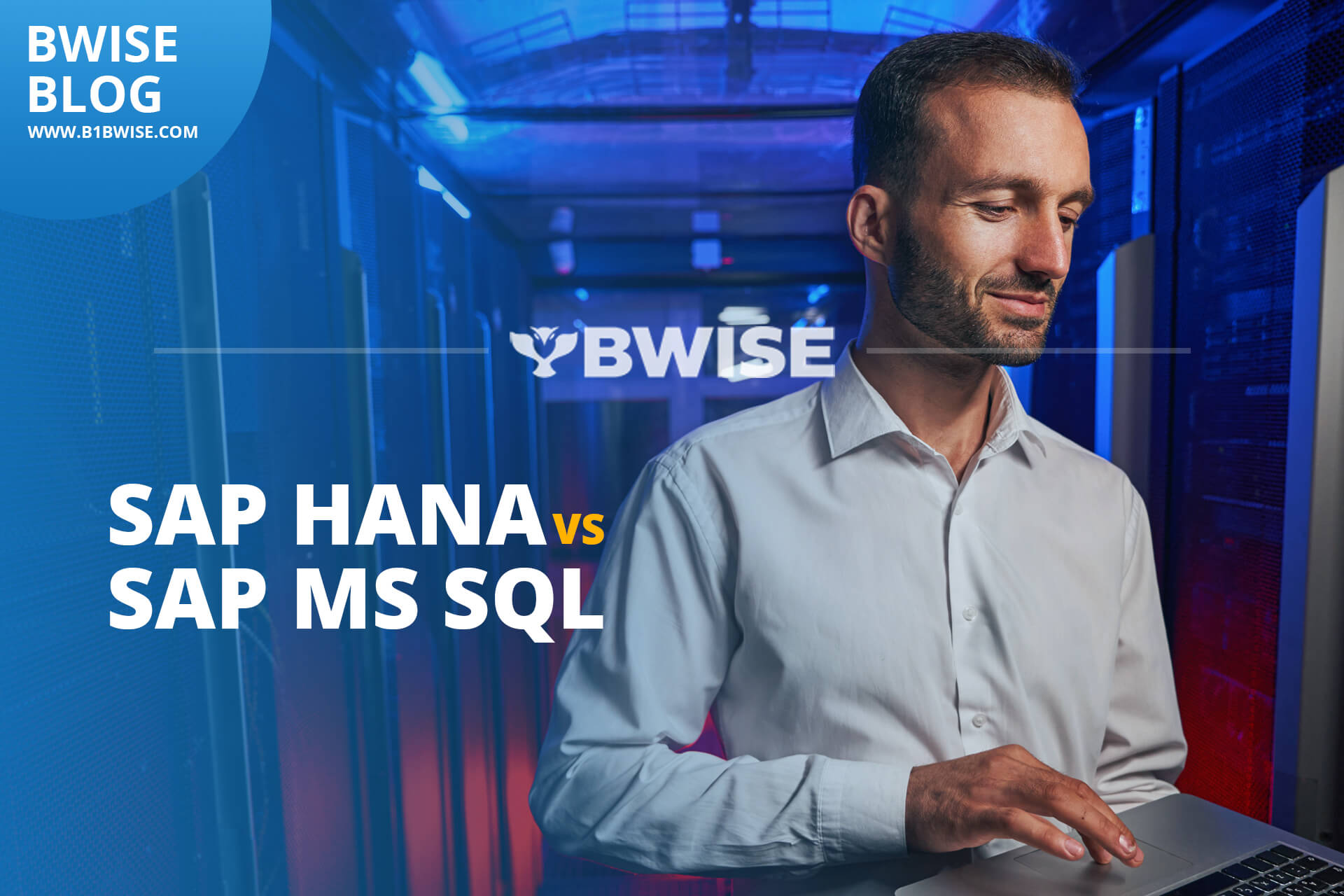
When comparing SAP HANA and SAP Microsoft SQL Server (SAP MS SQL), it’s important to note that both of these database management systems are part of the SAP ecosystem, are fully supported and are designed to work with SAP’s enterprise software solutions. Before we dive deep into the differences between SAP HANA and SAP MS SQL, let’s discuss first the individual points of each database.
SAP HANA
Is a powerful, high-performance, hyper fast, in-memory database management system and application platform developed by SAP. Here is a good opportunity to answer the often asked question, “what does the acronym, SAP, stand for? – Systems, Applications, and Products in Data Processing. It is designed to handle large volumes of data in real time and is often used for advanced analytics, data processing, and business applications. One of the defining features of SAP HANA is its in-memory computing architecture. It stores and processes data primarily in RAM (random access memory) rather than on traditional disk-based storage. This allows for extremely fast data access and processing, making it ideal for real-time analytics. SAP HANA has geospatial capabilities that enable the processing and analysis of location-based data, making it suitable for applications involving geographic information systems (GIS) and location-based services. SAP HANA is a versatile database and application platform known for its speed, scalability, and ability to handle complex data processing tasks. It has become a fundamental technology in the SAP ecosystem, enabling organizations to leverage real-time data insights for improved decision-making and competitive advantage.
SAP MS SQL
Refers to the usage of Microsoft SQL Server within the SAP ecosystem. Microsoft SQL Server is a relational database management system developed by Microsoft, and it is one of the databases that SAP supports for use with its enterprise software solutions. SAP applications, including SAP Business One, can be configured to use Microsoft SQL Server as the underlying database management system. This means that SAP’s applications store their data in an MS SQL Server database. On top of this, MS SQL Server uses its own variant of SQL called Transact-SQL (T-SQL). T-SQL includes extensions and enhancements to the standard SQL language, providing support for procedural programming, triggers, and functions.
Key Differences between SAP HANA and SAP MS SQL
- Database Type
- Performance
- Licensing and Cost
- Ease of Integration
- Platform Support
- Ecosystem and Support
Database Type:
-
- SAP HANA: SAP HANA is an in-memory database that stores and processes data primarily in RAM for high-speed data access and analytics. It is designed to take full advantage of in-memory computing.
- SAP MS SQL: SAP Microsoft SQL Server, on the other hand, is based on Microsoft SQL Server and can be configured to use both in-memory and traditional disk-based storage, depending on the version and configuration.
Performance:
-
- SAP HANA: HANA is known for its exceptional performance, especially for real-time analytics and complex data processing due to its in-memory architecture.
- SAP MS SQL: While SAP MS SQL can be tuned for high performance, it may not match the raw speed of SAP HANA for certain workloads, particularly those requiring real-time data processing.
Licensing and Cost:
-
- SAP HANA: Licensing costs for SAP HANA can be high, and it is often associated with premium pricing, especially when used with SAP’s enterprise applications. This cost is associated with the RAM requirements of in-memory processing.
- SAP MS SQL: Licensing costs for SAP MS SQL Server may vary depending on the edition chosen, but it typically offers more flexibility in terms of cost options, including free Express and more affordable editions.
Ease of Integration:
-
- SAP HANA: HANA is tightly integrated with SAP’s applications and is the preferred choice for SAP’s HANA-based solutions.
- SAP MS SQL: SAP MS SQL Server can also integrate with SAP’s applications but may require more effort in terms of configuration and integration.
Platform Support:
-
- SAP HANA: SAP HANA primarily runs on Linux but also supports Windows. It is designed to be platform-agnostic.
- SAP MS SQL: SAP MS SQL Server primarily runs on Windows but also supports Linux. However, it is more commonly associated with the Windows platform.
Ecosystem and Support:
-
- SAP HANA: HANA is part of the SAP ecosystem and may have specialized support and resources for SAP specific applications and use cases.
- SAP MS SQL: While it is used within SAP environments, it may have broader community support and resources due to its Microsoft SQL Server foundation.
In summary, the choice between SAP HANA and SAP MS SQL depends on your specific requirements, budget, and existing SAP ecosystem. SAP HANA is typically chosen for its in-memory processing capabilities and tight integration with SAP applications, while SAP MS SQL Server can be a more cost-effective option with broader platform support, especially if you have existing investments in Microsoft technologies. For more information regarding what database you need in your SAP implementation, we offer a free consultation. Remember B1- BWISE!

